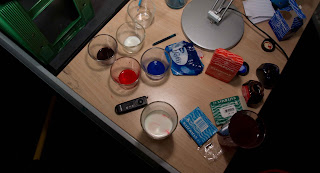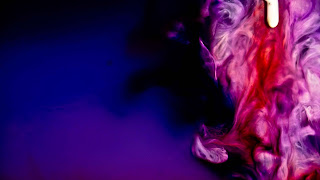Hello,
guys today I want to tell you, how to shoot Ink Droplets, that are falling into water, forming crazy shapes and patterns.I´ll tell you which equipment you´ll need and how to set up the shoot.
Equipment:
- Various ink colors (blue,red,gree,black,...)
- Milk
- A dropper or pipette
- A fishtank, or large glass container
- A blank sheet of paper (as large as your fish tank)
- A strong light
- Any cam with manual focus works well
- Some scotch tape
- A remote for your cam if you are alone
- A tripod
The shoot:
So first make sure that your fish tank is completely clean (no stains that could cause some unwanted reflections) then fill it with water.Now put your cam on the tripod in front of the tank. Pace the lightsource right next to your cam and switch it on. Now look through your viewfinder and search for any reflections (remove them if possible).
Next point is to set the camera settings to manual and set a low ISO,wide aperture and a fast shutterspeed, now also set your focus to manual and put some scotch tape over your tank (like in the picture below),
thats the level we will focus on and where we will drop the ink.Hereafter hold a pencil or any other test object at the level of the tape into your tank focus on it and lock the focus(now it´s essential not to move either the tank or the camera otherwise the shots aren´t sharp).
It´s time for the ink you can mix it with some milk ,this makes the shots more plastic and vivid .Use the pipette to drop single drops into the water at the level we already set with the tape.While you shoot i´ts useful to use the remote, so you don´t have to touch the cam anymore.
Here is my set up and some of the shots I´ve taken so far :
 |
| Many ink-milk mixtures I used |
well that´s my set up
 |
Poured a whole glass of milk in my tank looked awesome
|




























